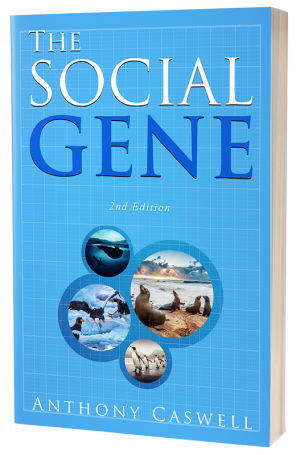The Social Gene vs The Selfish Gene
Viewers of animal behavior on television can experience a feast of exciting new information about the social interactions of an amazing range of animal species.
Unfortunately, when it comes to theoretical interpretation, they are left in the dark ages with ideas that are at least half a century out of date and have not shifted in the interim. They have not even caught up with our modern understanding of how genes work. The hypothesis of the selfish gene is a case in point, which proposes that social interactions are governed by the sum of all genes that a potential pair share in common. This is obvious nonsense, but has been unthinking dogma from the time before the double helix was recognized.
This exposition has been built on the many excellent observations and experiments of researchers in the field and in the laboratory. It accounts for the general types of sociality of mammals, including humans, as well as birds.
It explains how the two sex hormones, testosterone and estradiol, perform a dual role of both sexual and social attraction through the simple assumption that, while high levels promote opposite-sex interaction, low levels give rise to same-sex affiliation. With this simple intellectual maneuver, the full range of herd formation of species are accommodated including annual mating periods, dual sex associations, penguin societies and arbitrary mating periods.
The discovery that the fetus lies within about two cells of the placenta provides a cogent pathway for direct transmission between the two (Rutherhood JN AMJ Hum Biol (2009)) and makes this basis of communication more plausible and certainly more rational than selfishness.


